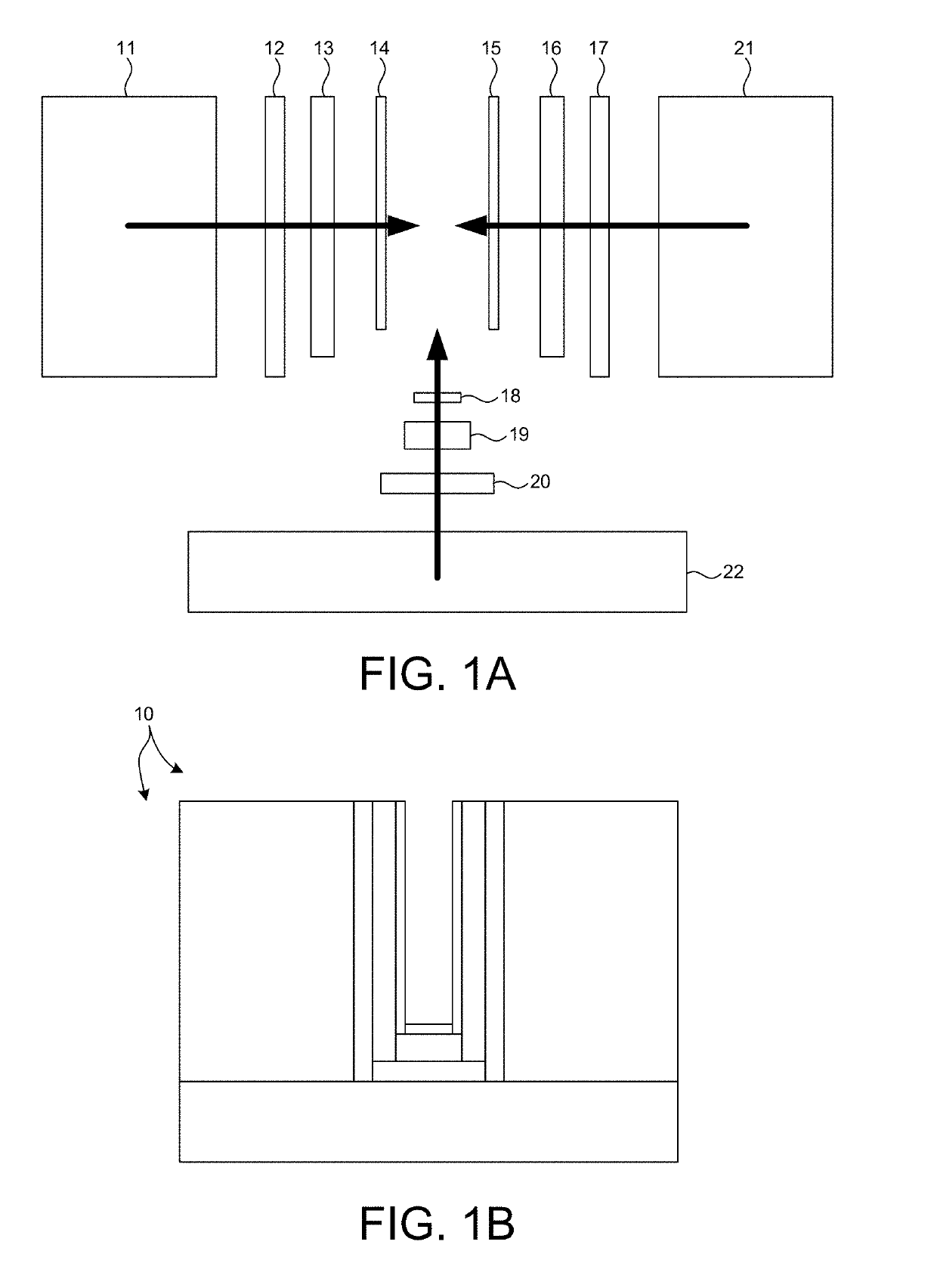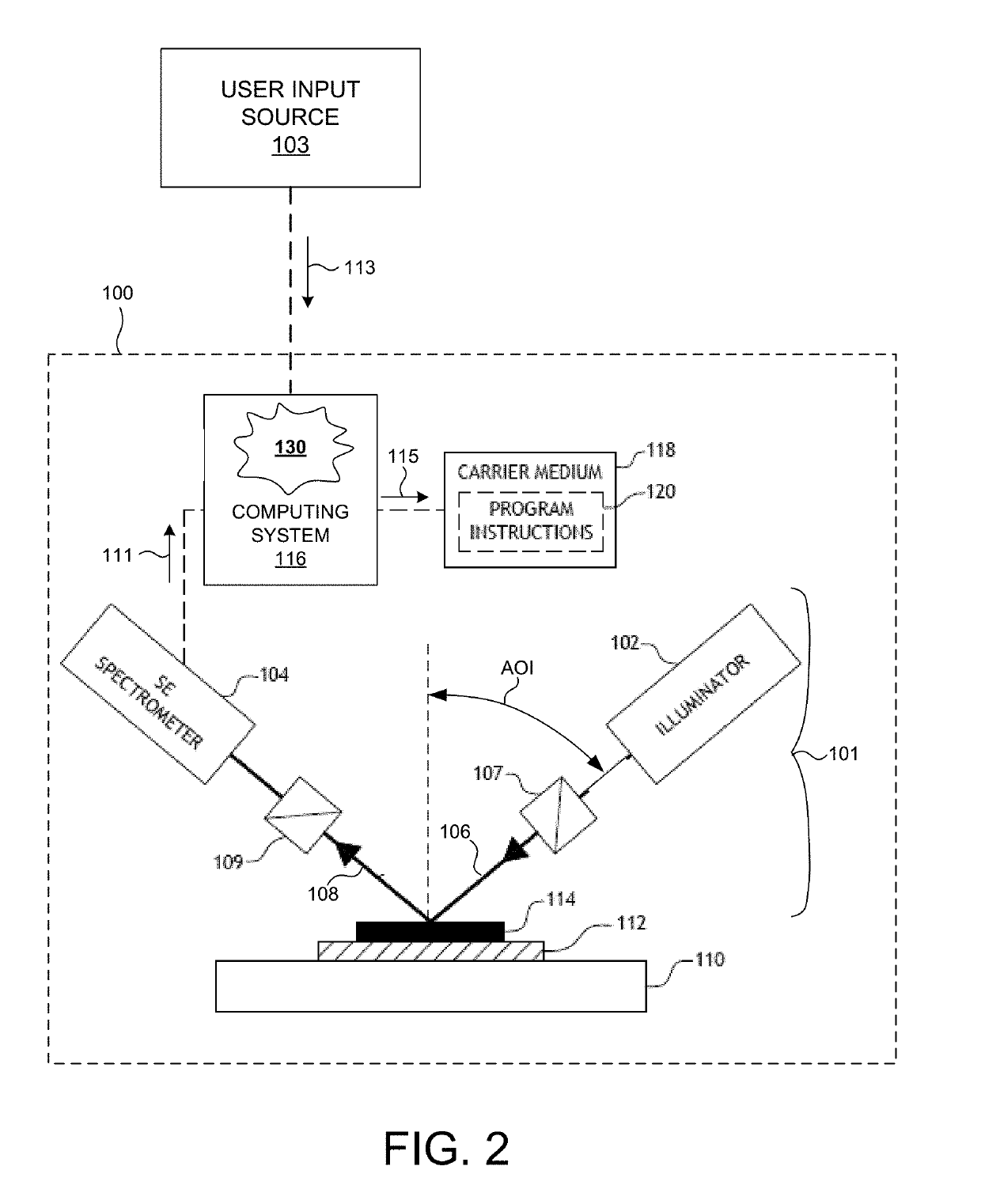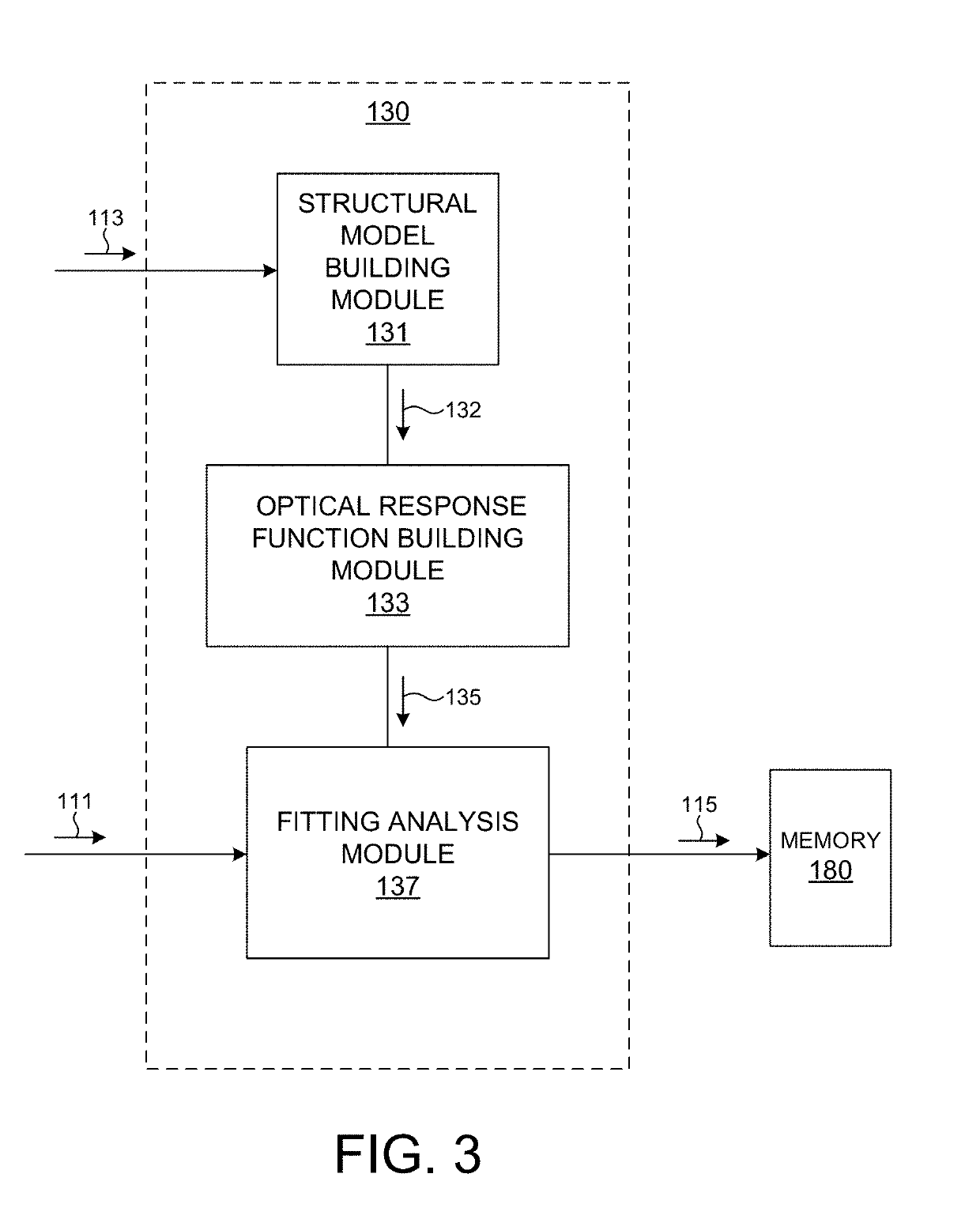Measurement Models Of Nanowire Semiconductor Structures Based On Re-Useable Sub-Structures
a semiconductor structure and measurement model technology, applied in semiconductor/solid-state device testing/measurement, instruments, computer-aided design, etc., can solve the problems of nanowire devices being particularly difficult to characterize, characterization difficulty, and characterization difficulty, so as to reduce the time to useful measurement results, less error prone, and more accurate
- Summary
- Abstract
- Description
- Claims
- Application Information
AI Technical Summary
Benefits of technology
Problems solved by technology
Method used
Image
Examples
Embodiment Construction
[0053]Reference will now be made in detail to background examples and some embodiments of the invention, examples of which are illustrated in the accompanying drawings.
[0054]Scatterometry based metrology for critical dimensions (CDs), thin film thicknesses, optical properties and compositions, overlay, lithography focus / dose, etc., typically requires a geometric model of the underlying structure to be measured. This measurement model includes the physical dimensions, material properties, and parameterization of the structure.
[0055]Methods and systems for generating measurement models of nanowire based semiconductor structures based on re-useable, parametric models are presented herein. Metrology systems employing these models are configured to measure structural and material characteristics (e.g., material composition, dimensional characteristics of structures and films, etc.) associated with nanowire semiconductor fabrication processes. The re-useable, parametric models of nanowire...
PUM
 Login to View More
Login to View More Abstract
Description
Claims
Application Information
 Login to View More
Login to View More - R&D
- Intellectual Property
- Life Sciences
- Materials
- Tech Scout
- Unparalleled Data Quality
- Higher Quality Content
- 60% Fewer Hallucinations
Browse by: Latest US Patents, China's latest patents, Technical Efficacy Thesaurus, Application Domain, Technology Topic, Popular Technical Reports.
© 2025 PatSnap. All rights reserved.Legal|Privacy policy|Modern Slavery Act Transparency Statement|Sitemap|About US| Contact US: help@patsnap.com



